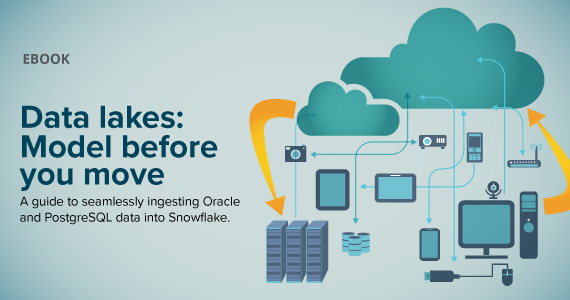
Data Moves with Purpose: Build the Foundation for AI
You're already ahead: your stack, your skills, your speed.
But a smarter foundation means less rework, faster AI results and a platform that’s ready to grow with you.
Don’t just move fast - move smart.
Because what you build now will power AI, analytics and innovation for years to come.

Frequently Asked Questions
“Modeling is your DevOps moment. Skip it now, and you’ll be rebuilding later.”
Most teams move fast out of necessity, falling back on familiar tools and skipping modeling or platform planning to meet deadlines. But short-term speed leads to long-term rework, tech debt and fragile pipelines.
Just like DevOps was once seen as a “nice to have,” data modeling has been deprioritized in the rush to deliver. Today, though, your data lake isn’t just a storage layer - it’s the backbone of analytics, governance and AI. Without modeling, you're building pipelines that don’t scale, platforms that can’t evolve and AI that underperforms.
Traditional ETL processes typically run in scheduled batches, which can create lag between when your data is generated and when it’s available for analysis. This delay can limit the usefulness of your data lake for real-time analytics or AI-driven workloads.
Real-time replication helps keep your data lake continuously in sync with operational systems, ensuring that changes are captured as they happen. It’s especially valuable when working with large data volumes or high-throughput environments where minimizing latency is critical.
Yes. A smarter foundation doesn’t delay results - it enables faster, more confident iteration.
For example, instead of hardcoding a one-off pipeline for a specific dashboard, this framework encourages modeling the data domain once and reusing it across teams. That means when the business asks for a new report or a machine learning feature, the data is already structured, governed and ready to go.
It’s the difference between building quick fixes and building momentum. Quick wins don’t have to come at the cost of long-term stability.
Readiness isn’t just about storage or compute - it's about structure, trust and traceability. If the current platform lacks lineage, governance or reusable models, it will struggle under AI-scale demands. This framework helps close those gaps before they become blockers.
Yes - but only with the right visibility. A complete monitoring framework should track not just performance but also cost impact.
For example, Foglight for Snowflake shows which users, queries and warehouses are driving costs - including inefficient queries that consume the most credits or underutilized warehouses with memory spillage or long queue times. It can even surface trends like weekly usage growth rates or pinpoint expensive workloads frozen in staging.
By tying technical behavior to business spend, this framework helps teams identify optimization opportunities and clearly demonstrate savings or efficiency gains - whether it’s cost per query, warehouse right-sizing or extending the runway of a Snowflake contract.




